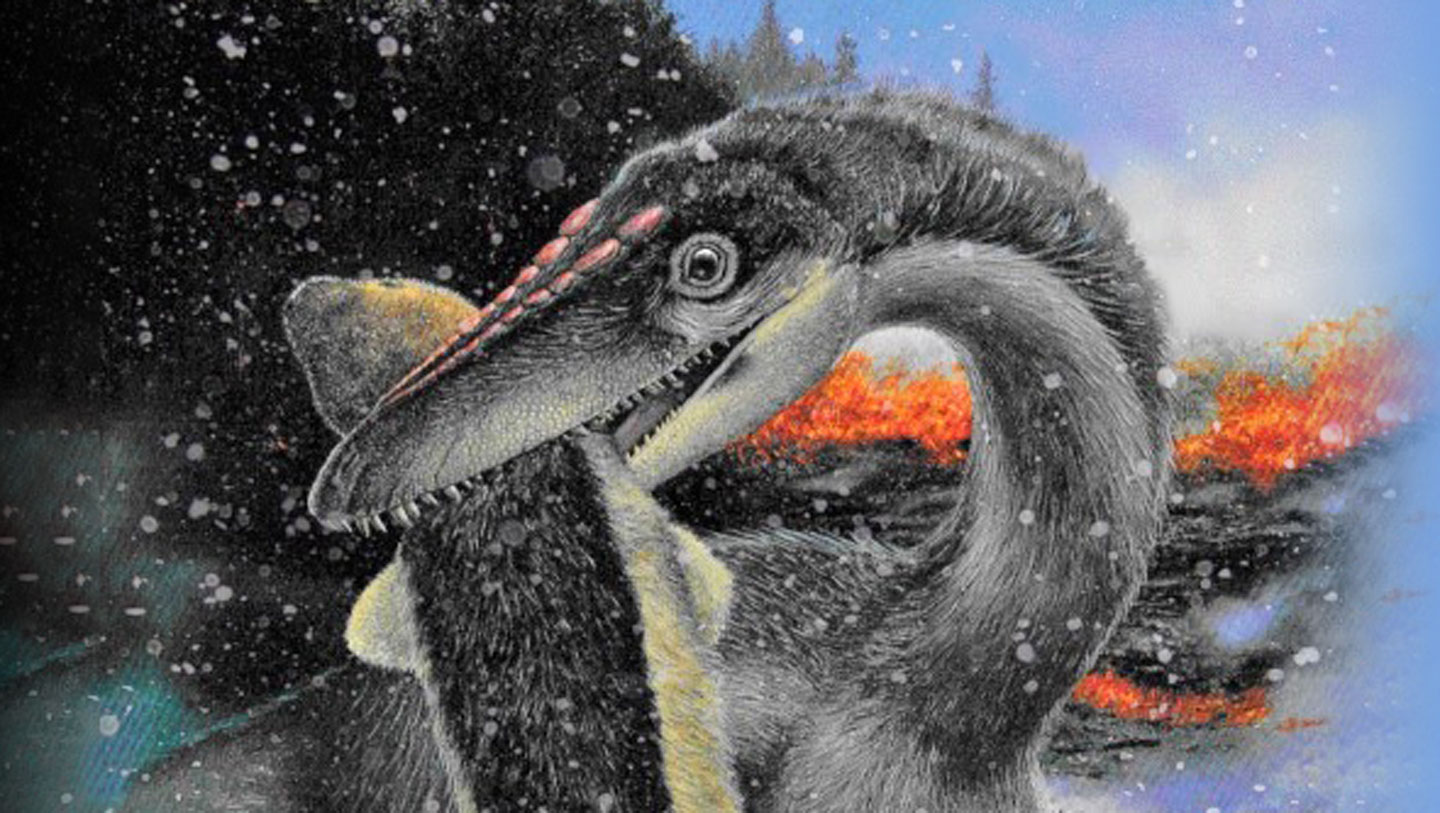Feathers may have helped dinosaurs survive the Triassic mass extinction
Widespread volcanic eruptions around 202 million years ago had a profound effec

Widespread volcanic eruptions around 202 million years ago had a profound effect on Earth’s climate, triggering a mass extinction event that killed off three-fourths of the planet’s species, including many large reptiles. Yet dinosaurs, somehow, survived and went on to thrive.
Dinosaurs are often thought of as heat-loving, well suited to the steamy greenhouse environment of the Triassic Period. But the secret to their survival may have been how well adapted they were to the cold, unlike other reptiles of the time. The dinosaurs’ warm coats of feathers could have helped the creatures weather relatively brief but intense bouts of volcanic winter associated with the massive eruptions, researchers report July 1 in Science Advances.
The new data suggest that — despite the extremely high CO2 levels — this region also experienced harsh, frigid winters, with the lake at least partially freezing over. The evidence comes from the same rocks that bear the footprints. Analyzing the distribution of grain sizes in the rocks, the researchers determined that a large portion of the grains weren’t part of the original lake mud, but had been carried there from elsewhere.
The most likely explanation, Olsen says, is that these grains are “ice-rafted debris” — a well-known phenomenon in which bits of rock freeze to the base of ice along a shoreline, and then hitch a ride with the ice as it eventually drifts into open water. As the floating ice melts, the bits of rock sink, deposited in new territory.
Volcanic winters might last for tens or even hundreds of years, Olsen says, depending on how long volcanoes continue to erupt. In this case, the huge sheets of lava linked to the CAMP eruptions point to at least tens of thousands of years of eruption pulses, maybe even a million years. That could have kept the winters going for a good long time — long enough to drive many less-well-insulated reptiles off the face of the Earth, he adds. Episodes of those freezing conditions may have even extended all the way to the tropics, the team says.
Evidence of feathers has been found in the fossils of many types of dinosaurs, from carnivorous theropods to herbivorous ornithischians. Recent reports that flying reptiles called pterosaurs had feathers too now suggests that the insulating fuzz has been around for even longer than once thought — possibly appearing as early as 250 million years ago, in a common ancestor of dinosaurs and pterosaurs (SN: 4/29/22).
Thanks to those insulating feathers, dinosaurs were able to survive the lengthy winters that ensued during the end-Triassic mass extinction, Olsen and colleagues say. Dinosaurs might then have been able to spread rapidly during the Jurassic, occupying niches left vacant by less hardy reptiles.
This study “shows the complexity of disentangling not only the success of certain groups, but also the causes and effects of mass extinction events,” says paleontologist Randall Irmis of the University of Utah in Salt Lake City, who was not connected with the study. “There’s a pretty good consensus that [the CAMP eruptions are] the cause of the mass extinction — but there are a lot of subtleties we haven’t appreciated.”
That dinosaurs living in the far north at the time were able to survive due to their feathery insulation makes sense, Irmis says. But whether a volcanic winter caused by dimming could have extended far enough south to freeze the tropics too — giving dinosaurs a similar advantage there — isn’t yet clear. “Dimming is a global effect, but how that plays out is a lot more severe at the poles compared to low latitudes.”
Feathers are probably just one of many reasons why dinosaurs diversified and spread rapidly across the globe at the start of the Jurassic, Irmis says. “There’s a lot that plays into why they became such a successful group.”




